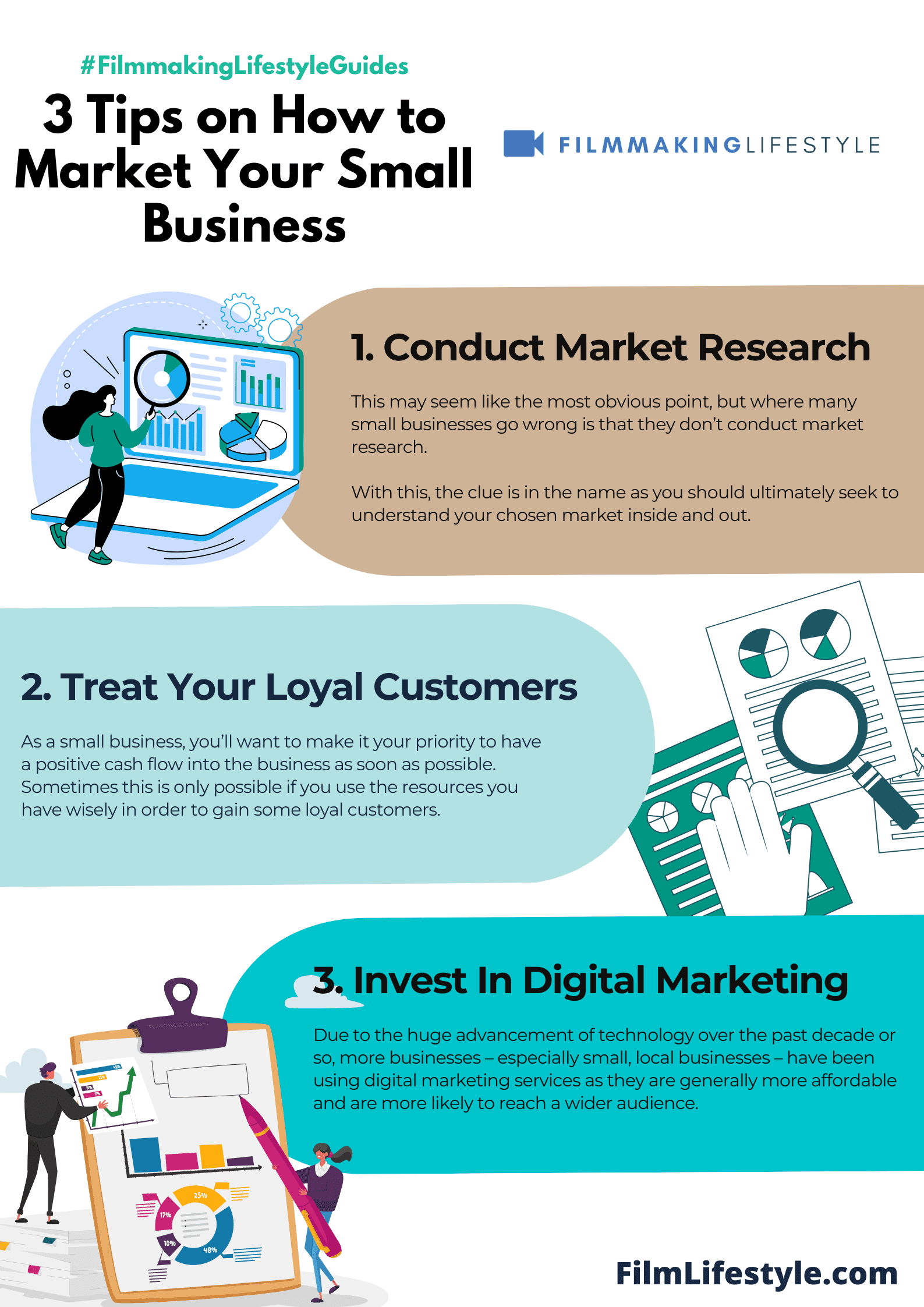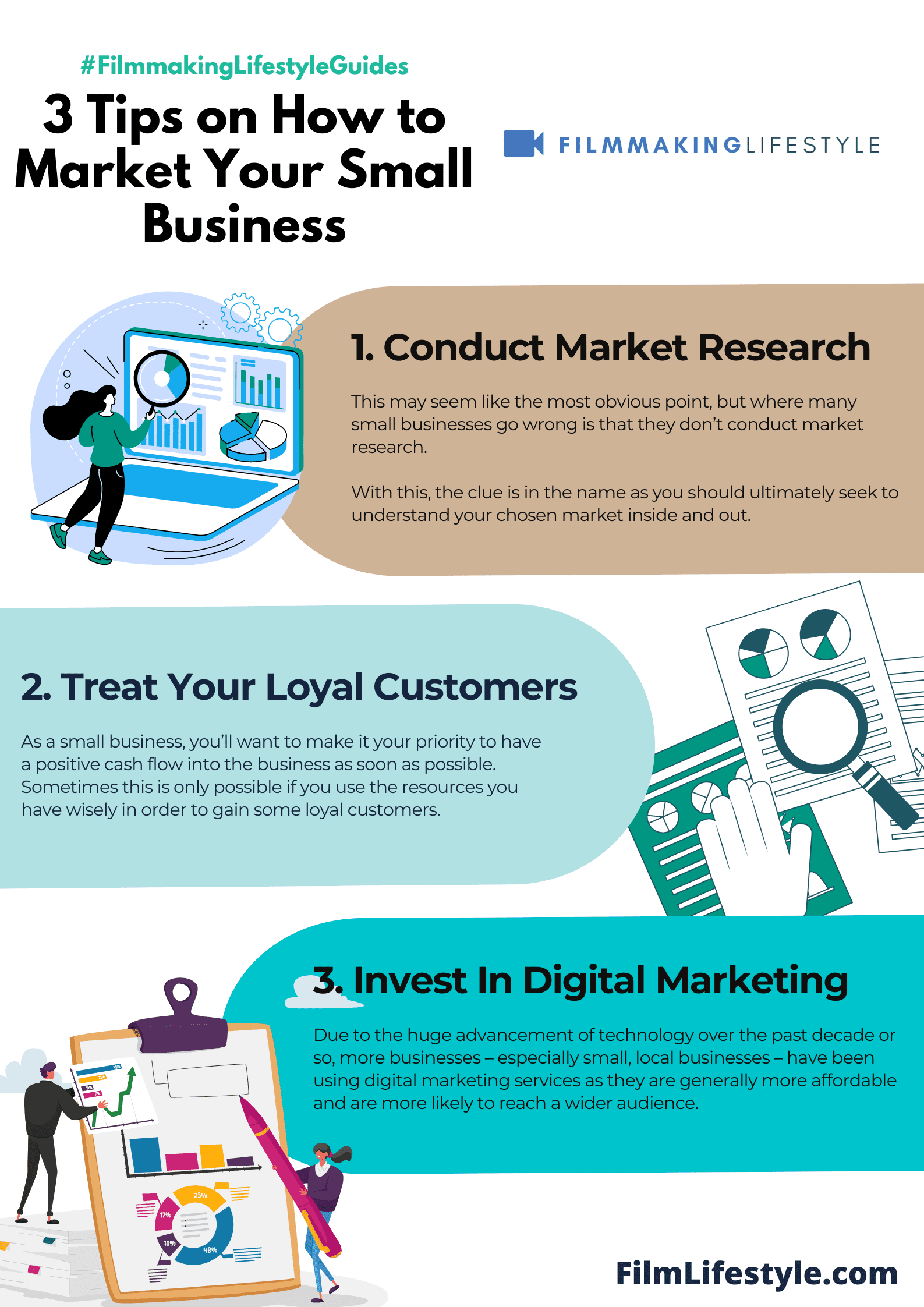Marketing your small business isn’t just about getting the word out; it’s about creating a buzz that turns heads and drives sales.
We’ll jump into strategies that ensure your brand stands out in a crowded marketplace.
From leveraging social media to mastering SEO, we’ve got the insider tips to boost your visibility and attract more customers.
Stay tuned as we unpack the essentials of small business marketing that can make a big impact.
Targeting Your Audience
Knowing who you’re trying to reach is half the battle in marketing.
We can’t emphasize enough – identifying your ideal customer profile is a cornerstone of successful marketing efforts.
Before you can create compelling content or craft targeted advertisements, you need a clear understanding of your audience’s demographics, interests, and behaviors.
It’s not just about whom you are reaching but also understanding what they care about and how they interact with content.
Once we’ve narrowed down who our audience is, we cater our message to resonate with them on a personal level.
Our goal is to speak directly to their needs, challenges, and desires.
This personalized approach fosters a stronger connection and can dramatically improve the effectiveness of our marketing strategies.
Whether it’s through emotive storytelling or showcasing relatable scenarios, our content must strike a chord with our audience.
Effective audience targeting isn’t about casting the widest net – it’s about casting the smartest one.
We use data-driven insights to inform our decisions:
- Age,
- Location,
- Interests,
- Spending habits,
- Social media activity.
Through this information, we develop a tailored strategy that will engage our viewers more effectively.
Our marketing efforts then become less of a shotgun approach and more of a precision strike.
The platforms we choose, the tone of our messages, and even the timing of our communications are all refined based on our audience understanding.
By focusing on who is most likely to appreciate and respond to our content, we’re not just shooting in the dark.
We’re aligning our efforts with those who find the content in films like The Social Network or books like Contagious: How to Build Word of Mouth in the Digital Age compelling.
We’re tapping into the narrative that our audience lives and breathes every day, ensuring that our content isn’t just seen – it’s watched, shared, and remembered.
Developing A Brand Identity
Creating a strong brand identity is like casting a leading character in a film.
It’s the face that your audience will associate with your story – your business.
We understand that brand identity is more than just a logo; it’s the cumulative impression your company makes, encompassing your values, how you communicate your product, and how you want people to feel when they interact with it.
Brand identity is the vehicle that carries your marketing strategies directly to the hearts and minds of your audience.
Crafting this identity requires an understanding of your unique selling proposition and the emotive aspects that resonate with your target market.
From the visual elements like color schemes and typography to the tone of voice used in your messaging, every aspect should be strategically aligned to project a cohesive and memorable brand image.
To effectively develop a brand identity, consider these elements:
- Visual Design Elements – logos, color schemes, typesetting, and packaging,
- Brand Messaging – taglines, voice, and content that convey your brand’s mission, values, and uniqueness,
- Consistency – maintaining a uniform image across all platforms and marketing materials.
In the world of filmmaking, just as in marketing, consistency is key.
The audience’s experience with your brand should be as seamless as the storyline of a well-edited film.
Whether it’s your website, your social media profiles, or even your business cards, every touchpoint is an opportunity to reinforce your brand identity, establish your presence in the market, and distinguish your small business from competitors.
By forging a strong brand identity, we’re not just making a statement – we’re inviting our audience into a narrative that they want to be part of.
Remember that your brand should evolve with your audience, so keep your finger on the pulse of their changing needs and preferences.
This way, your brand remains relevant and continues to engage your audience in meaningful ways.
Utilizing Social Media Platforms
We understand the power of social media when it comes to marketing a small business.
These platforms offer a direct line to potential customers, enabling us to showcase our brand’s unique personality.
Navigating social media can feel like directing a dynamic scene in The Wolf of Wall Street.
Each platform has its nuances and requires a tailored approach – much like choosing the right lens for a specific shot.
Facebook and Instagram are akin to high-budget blockbusters, reaching vast audiences with varied content.
Here’s what we advise to keep in mind:
- For Facebook – focus on community building and engagement. – Host live Q&A sessions. – Share behind-the-scenes content.
- For Instagram – leverage visual storytelling and trends. – Experiment with stories and reels. – Use hashtags effectively.
Twitter, on the other hand, is like an indie film – quick, witty, and to the point.
It’s all about the conversation, connecting us with influencers and niche communities.
On platforms such as LinkedIn, we take a more professional and networking-focused approach.
Think of it as the film festival circuit where industry connections are key.
The ephemeral nature of content on platforms like Snapchat and TikTok encourages us to be creative and spontaneous.
Imagine an improv scene in Curb Your Enthusiasm – it’s unpredictable but can be incredibly engaging.
By harnessing the strengths of each social media platform, we create a cohesive and effective online presence.
Like a well-edited film, a balanced social media strategy keeps the audience wanting more.
Creating A Content Marketing Strategy
When marketing a small business, crafting a comprehensive content marketing strategy is akin to developing a script for a successful film.
It’s the blueprint that guides the narrative of your brand.
Like a meticulous director, we must consider the main elements – audience engagement, content relevancy, and distribution channels.
To start, we define our audience’s needs and interests.
Identifying who they are helps us create content that resonates.
It’s equivalent to casting the right actors for a film; they need to connect with the audience on an emotional level.
Next, we set actionable goals.
- Understand our audience demographics,
- Set measurable objectives for engagement and conversion,
- Develop a content calendar to maintain consistency.
Picking the right mediums for our message is crucial.
Whether it’s blog posts, videos, or social media updates, each platform offers unique advantages.
It’s important to use the strengths of each medium, much like choosing the right lens for a scene adds depth and perspective to the story.
To measure success, we track key performance indicators (KPIs).
We’re looking at website traffic, lead generation, and conversion rates among others.
This data tells us what’s working and what needs tweaking.
- Track website analytics,
- Monitor social media interaction,
- Adjust strategy based on performance metrics.
SEO plays a starring role in our content marketing strategy.
We optimize our content with targeted keywords.
These words act as signposts, directing traffic to our website and improving our search engine rankings.
Staying on top of industry trends keeps our strategy fresh and relevant.
We watch for emerging platforms and adapt our content accordingly.
Innovation in content distribution can give us the competitive edge just as new filmmaking technologies revolutionize storytelling.
Optimizing Your Website For Seo
As we jump deeper into the world of digital marketing, we must not overlook the significance of optimizing our website for search engines.
SEO is at the heart of online discoverability, where strategic keywords and meta descriptions lead potential customers to our virtual doorstep.
Our commitment to search engine optimization is reflected in the careful crafting of our site’s content.
We not only integrate relevant keywords but also ensure that our content provides value and engages our audience.
Google’s algorithms favor websites that offer informative and user-friendly experiences, boosting our ranking and visibility.
Optimizing our site’s structure for easy navigation is equally important.
A well-organized website with clear categories and a responsive design ensures viewers can effortlessly access the content they seek.
This is especially pertinent for filmmakers, whose portfolio must be showcased in a way that captivates and retains visitor interest.
We also stay vigilant about our website’s loading speed – a critical factor that can make or break a user’s experience.
By compressing images and utilizing caching, we keep load times to a minimum, understanding that in the fast-paced online world, speed is of the essence.
Here are some fundamental SEO practices we incorporate:
- Ensuring each page has a unique title and description.
- Using alt text for all our images.
- Creating a sitemap to aid search engines in indexing our website.
By leveraging these SEO techniques, we enhance our website’s ability to rank well on search engines.
As a result, when web users search for films like The Grand Budapest Hotel or Inception, they’re more likely to stumble upon our related content, reviews, or behind-the-scenes coverage.
Remember, SEO is an ongoing process that requires continuous attention and adaptation.
We monitor our site’s performance and make adjustments to keep up with changing trends and algorithm updates.
By doing so, we ensure that our site remains competitive and continues to reach our target audience effectively.
Leveraging Email Marketing
Email marketing remains one of the most effective tools in our digital arsenal.
It’s direct, cost-effective, and proven in building and maintaining relationships with our audience.
As small businesses, we leverage email marketing to drive sales, share valuable content, and announce new products or services.
To start, we must build a strong email list.
A robust list takes time to develop but is invaluable for targeted campaigns.
We encourage sign-ups through multiple touchpoints – our website, social media channels, events, and even at our brick-and-mortar locations if applicable.
Remember, the quality of subscribers is crucial; it’s better to have a smaller, engaged list than a large uninterested one.
Next, we focus on compelling content.
Each email should offer something of value – be it exclusive deals, insightful information about our industry, or behind-the-scenes peeks our audience can’t get elsewhere.
Think of every email as a scene from a film; it must engage the viewer and propel the story forward.
Email automation tools are also vital.
They help us send emails at the optimal time, personalize messages, and segment our audience for better targeting.
This level of personalization is like carefully editing a scene to ensure the message hits home with our intended audience.
Finally, we track and adjust.
Key performance indicators like open rates, click-through rates, and conversion rates tell us what’s working and what’s not.
A/B testing different elements of our emails – such as subject lines, call to action, or even send times – allows us to refine our strategy continually.
It’s similar to the post-production process of filmmaking, where the final product is honed through feedback and adjustments.
As we integrate these practices into our broader marketing strategy, we’re confident that email marketing will remain an exciting and essential channel for connecting with our customers and driving our business forward.
Collaborating With Influencers
In the world of digital marketing, influencers have emerged as powerful allies for brands and businesses.
Influencer marketing is about partnering with social media personalities to enhance your brand’s reach and credibility.
These collaborations can lead to increased exposure and, if done right, a significant return on investment.
Our experience shows that filmmakers and creative professionals can benefit immensely from these partnerships.
Before reaching out to influencers, it’s crucial to identify those whose audiences align with your target demographic.
Authenticity is key – an influencer’s endorsement should feel genuine and resonate with their followers.
We’ve seen filmmakers successfully leverage influencer relationships by aligning with those who have a passion for storytelling, cinema, or technology related to our industry.
Crafting a clear and appealing pitch is
Influencers are bombarded with offers, so ours needs to stand out.
We highlight what makes collaboration with our filmmaking brand unique and beneficial.
It’s not just about what they can do for us, but how we can add value to their brand as well.
Monitoring the success of influencer collaborations is essential – we track metrics such as:
- Engagement rates,
- Traffic to our site,
- Conversion rates.
This data helps us understand the impact of our influencer marketing efforts and allows us to make informed decisions on future campaigns.
Remember, influencer partnerships should be more than a one-off; they’re an opportunity to build long-term relationships that can help both parties grow over time.
Tracking And Analyzing Your Marketing Efforts
In the realm of small business marketing, it’s crucial we track and analyze every effort we make.
Whether it’s a social media campaign or a collaboration with an influencer, understanding the impact of our activities helps us refine our strategies.
Let’s tackle analytics.
These are invaluable tools in gauging the effectiveness of our marketing techniques.
With platforms extending robust analytics, we’ve got a clear view of what’s working and what isn’t.
Metrics are the lifeblood of any marketing analysis.
We look at several key indicators to measure success:
- Engagement rates,
- Click-through rates,
- Conversion rates.
We also keep our eyes on the ROI of our campaigns.
This means calculating the ratio of money earned to money spent on each effort.
We allocate our budget more efficiently when we understand the return on investment.
Social media analytics tools come in handy for fine-tuning our approach.
They show us everything from the best time to post to the most impactful type of content for our audience.
For our filmmaking-oriented marketing, we pay close attention to video-related metrics.
This includes:
- Watch time,
- Shares and comments,
- Video completion rates.
Linking our marketing efforts to sales can be complex, but it’s essential.
We track user behavior from the moment they interact with our content to the final purchase.
This journey highlights the touchpoints that need our attention.
Experiments and A/B testing are part of our routine.
We constantly test variables in our ads and social posts to see which elements resonate most.
Every test we run is an opportunity to learn and optimize.
Remember, data is only useful if it’s actionable.
We don’t just collect numbers; we use them to shape our future marketing initiatives.
By keeping track of these metrics, we adjust, adapt, and amplify our success, pushing our small business to new heights.
How To Market Your Small Business – Wrap Up
We’ve armed ourselves with the tools and strategies needed to propel our small business marketing forward.
By embracing analytics and metrics we can make informed decisions that drive growth.
It’s about more than just launching campaigns—it’s about understanding their impact and refining our approach.
Let’s use the data to our advantage, continually testing and adjusting until we find what resonates with our audience.
With persistence and precision, we’ll not only reach but exceed our marketing goals.
Here’s to our success and the exciting journey ahead!
Frequently Asked Questions
What Are The Key Metrics To Measure Marketing Effectiveness?
The key marketing metrics include engagement rates, click-through rates, conversion rates, and return on investment (ROI).
Why Is Tracking Marketing Efforts Important For Small Businesses?
Tracking marketing efforts is vital for small businesses to understand the effectiveness of their marketing strategies, optimize their campaigns, and allocate resources efficiently.
How Can Social Media Analytics Tools Help Small Businesses?
Social media analytics tools help small businesses by providing insights into campaign performance, audience behavior, and engagement on social media platforms.
What Role Do Video-related Metrics Play In Marketing?
Video-related metrics allow businesses to gauge the success of video content, understand viewer engagement, and refine video marketing strategies.
How Should Small Businesses Link Marketing Efforts To Sales?
Small businesses should directly track how marketing campaigns lead to sales through conversion tracking and by assessing the customer journey from initial contact to purchase.
What Is The Importance Of A/b Testing In Optimizing Marketing Strategies?
A/B testing is important for optimizing marketing strategies by comparing different campaign variations to determine which performs best and making data-driven decisions.
How Can Data Shape Future Marketing Initiatives For Small Businesses?
Data from analytics and metrics informs small businesses which marketing initiatives work best, helping them to tailor future strategies for improved outcomes and growth.










